Staying hydrated
Feeling parched is more than just an uncomfortable cue that your body needs to level up with a glass of water, it’s more like the waving of a red flag. “If you’re feeling thirsty you are already mildly dehydrated,” says Amy Scott-MacLean, RDN, and owner WellnessWise. Although it’s easy to get sidetracked and miss out on those much-needed fluids, the truth is that most healthy people can typically meet their hydration needs. How? By paying attention to when you’re thirsty, and drinking fluids as needed. (Here are signs you are actually drinking too much water.)
It’s important to note that guzzling water isn’t the only way to stay hydrated. These are the water-rich foods that can provide nutrients and be used in addition to water to make sure you are getting adequate fluids.

Hydrating foods
Dehydration can make you feel sluggish and impact our body’s ability to run at an optimal level, even if you are just mildly low on fluids. “This slight level of dehydration can impact your mood, your memory, your attention, and your coordination as well as your energy level,” says Scott-MacLean. “You may also develop a headache and become grouchy.” (Here are other signs and symptoms of dehydration.) But there’s even more to it than that. She explains that, at the cellular level, cells start to shrink and blood becomes thicker, with the kidney beginning to hold onto water. There will be a decrease in urine production and body temperature struggles to regulate well. “Without water, the body doesn’t sweat so your body is not cooled down under exertion. This will trigger an increase in thirst.” (Don’t miss the surprising benefits of lime water for your health.)
While drinking water is the best way to hydrate, there are water-rich foods that can also help supplement your fluid intake.
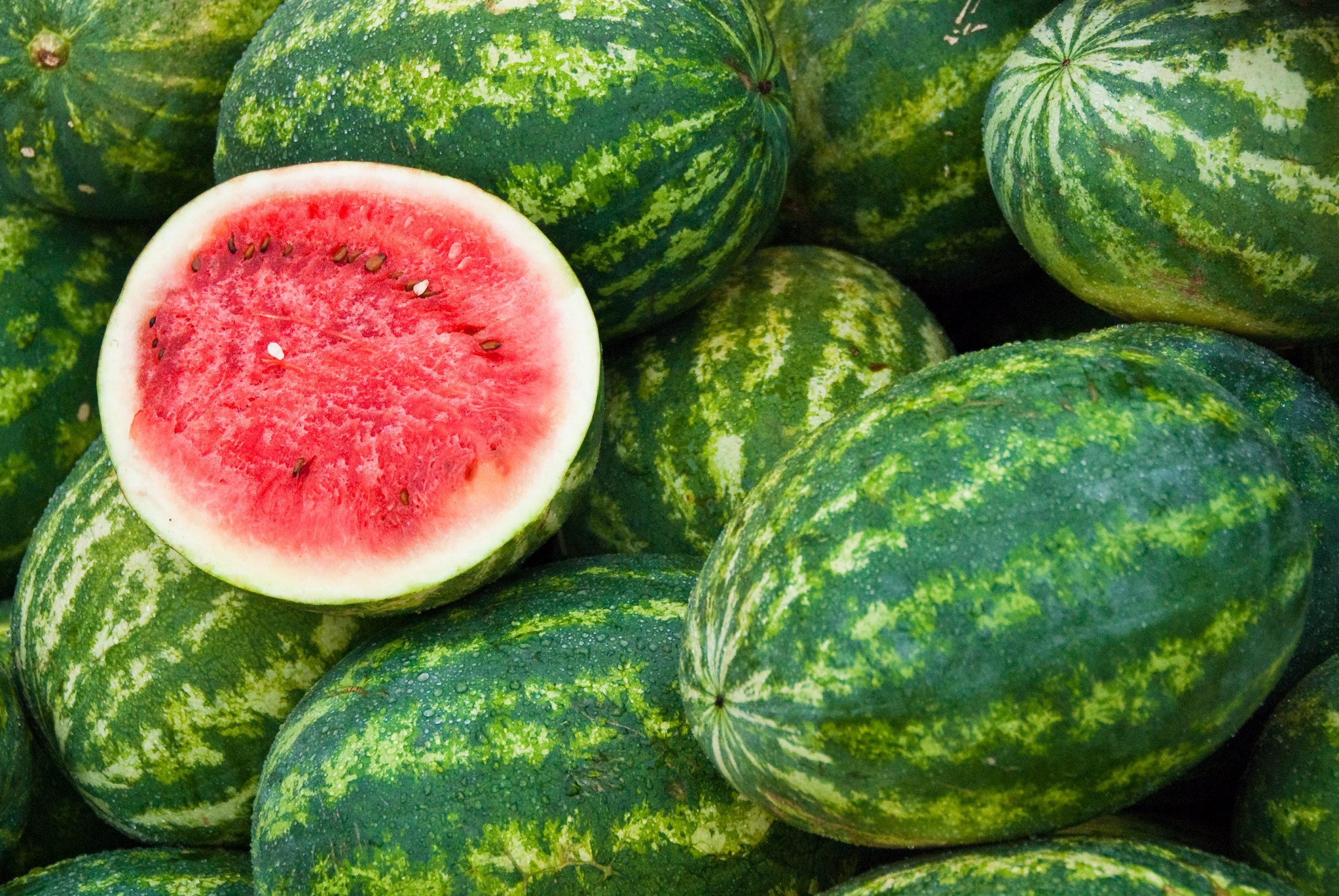
Watermelon
The word water is in the name, so watermelon has to be pretty hydrating, right? In this case, yes. “For reference, tap water is essentially all water (99.9% water by weight) and one cup provides 8 ounces of water and zero calories,” explains Kris Sollid, RD, senior director of nutrition communications at the International Food Information Council. “By comparison, it would take about 1 watermelon wedge (1/16 of a watermelon, 86 calories) to achieve roughly the same amount.” Want to add a little more watermelon to your diet? Aside from the fruit being simply delicious on its own (particularly during the summer months), consider creating a salad with it, tossed with cucumber (another food on this list), and feta cheese.
Watermelon’s water content: 92%
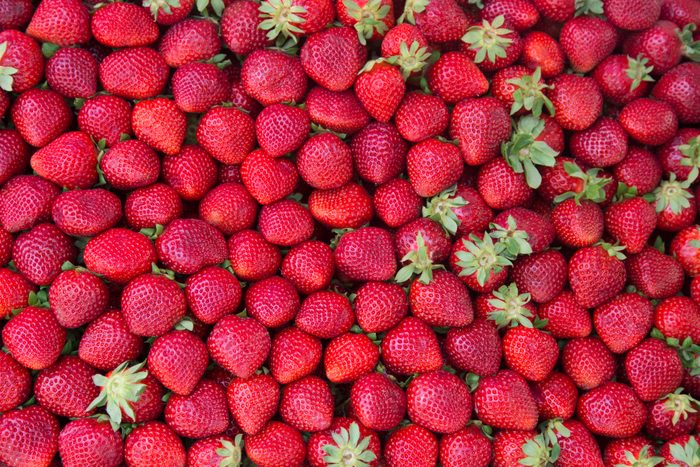
Strawberries
“For the casual eater, if you’re looking to up your intake of water from foods, try eating more juicy fruits, like berries, citrus, and melons,” says Sollid. With a moisture content of 90 percent, strawberries are a great place to start. If you’re eating half a cup of this fruit, it equates to approximately 2.4 ounces of water. Throw strawberries into smoothies or salads for a little extra oomph. They’re also a lovely addition to flavor a glass of water and make that H20 seem more appealing, because as all of our experts reiterate, it’s important to get most of the wet stuff in liquid form. “While you can get fluid the body needs from food we do need to hydrate with water as well,” says Scott-MacLean. “You should have 80% of your fluid from water or liquid sources. You can also drink unsweetened teas like black, green, white, and herbal as well as sparkling waters and seltzer that count like water.”
Strawberries’ water content: 90%
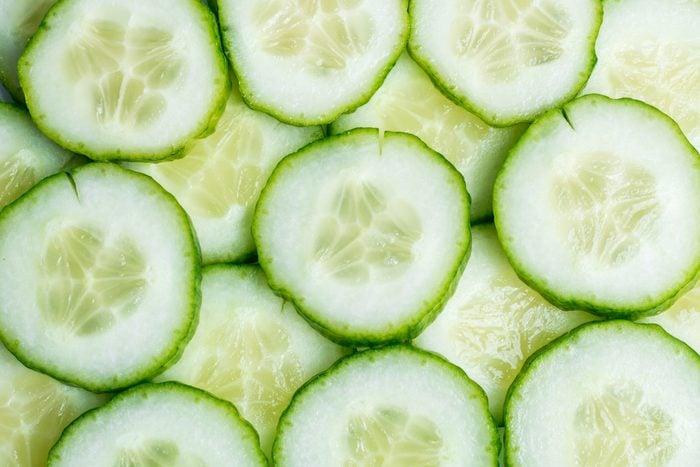
Cucumber
Food for thought: Cucumber slices aren’t merely refreshing when resting on your eyes during a facial. They’re perfectly hydrating for your insides as well. ” Cucumbers are 96% water, which means it’s 4.5 oz of water per 1-cup cucumbers and just 16 calories per cup,” says Becky Kerkenbush, advanced practitioner in clinical nutrition and state media representative to the Wisconsin Academy of Nutrition and Dietetics. “Use it with mint to flavor a pitcher of water, make it into soup, add it to pizzas and salads, or use slices for dipping.”
Cucumber’s water content: 96%
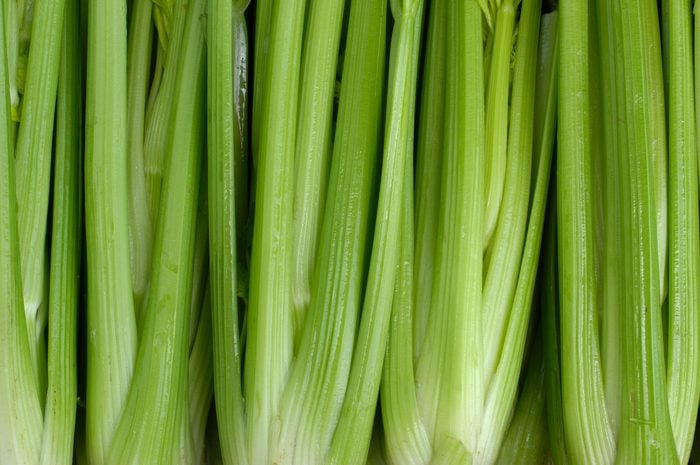
Celery
Oh, celery, the unsung hero of a crudite platter. It has a deliciously high water content at 95%. A cup of celery is roughly equivalent to 3.4 ounces of water (so just shy of half a glass). Scott-MacLean notes that all of these fruits and vegetables have fiber, antioxidants, flavonoids, vitamins, and minerals, so many more benefits than simply their water content. “Flavonoids help with protecting cells by reducing inflammation,” she says. “Antioxidants prevent oxidation and free radicals which protects the cells from damage.” Celery is a popular ingredient in green juices, not to mention a welcome addition to soups.
Celery’s water content: 95%
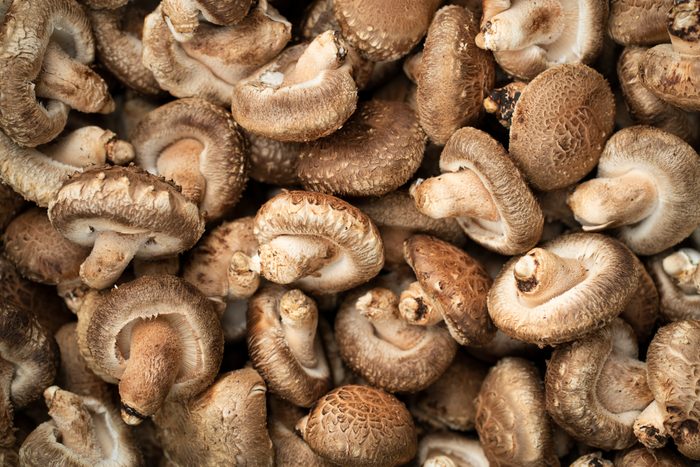
Mushrooms
“There are many foods that people might be surprised to learn are hydrating,” says Sollid. “Mushrooms come to mind. Once you start cooking them down, however, you’ll quickly be reminded of their high water content!” Reap the benefits of the fungus by cooking up a savory mushroom broth, so rich with flavor you won’t even miss the beef or chicken. A 2015 study in the International Journal of Medical Microbiology points to the impressive nutritional value of mushrooms, nothing that they are not only high in protein but also have antibacterial properties as well as cholesterol-lowering properties. According to Sollid, it would take about 4 cups of sliced mushrooms (60 calories) to equal a cup of water. Note that raw mushroom contains more water than cooked. (Here’s more about the nutritional magic of mushrooms.)
Mushrooms’s water content: 92%
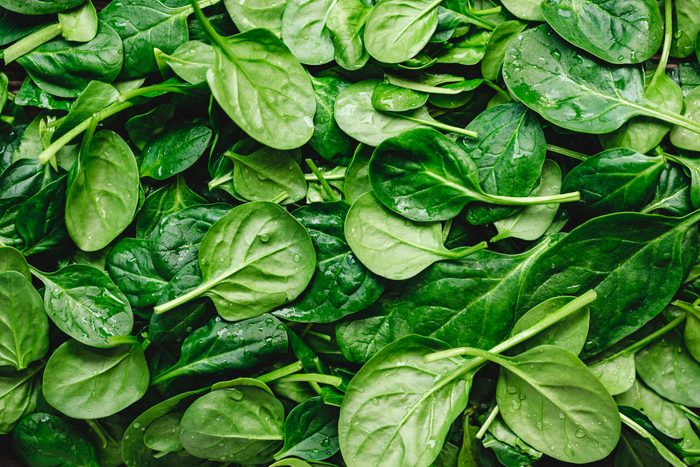
Spinach
Similar to mushrooms, when you start cooking down spinach it’s plain to see how much water those leafy greens hold. What appears to be a plentiful bag of fresh spinach turns into a surprisingly small pile of veggies once it loses its H20 during the sauteeing process (or however you like to prepare it). And that’s because spinach has a water content of a whopping 91%. This translates to one ounce of water per one cup of the greens. Spinach is so versatile, and it’s pretty easy to add it to a multitude of things, like juices, dips (hello, spinach artichoke dip), pasta salad, and sandwiches, just to name a few. You could also make a spinach salad that features other water-rich foods on this list to pack a hydrating edible punch.
Spinach’s water content: 91%
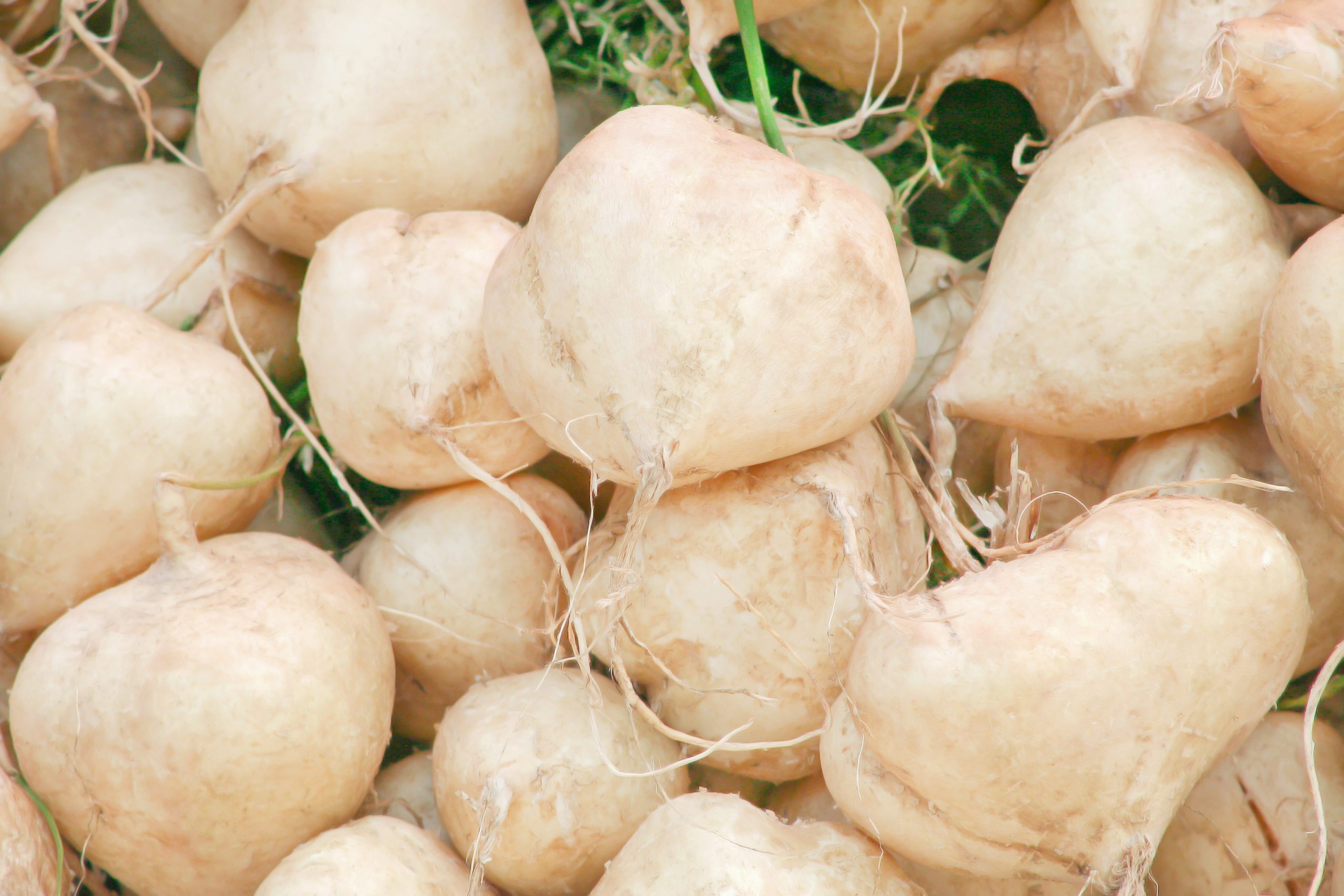
Jicama
Don’t write jicama off as just an easy way to add crunch and intrigue to a salad. There’s so much more to this root vegetable. Kerkenbush suggests adding it to a stir-fry or roasting, or you can even make jicama fries. With 90% water content, one cup of sliced jicama contains 46 calories and 4 ounces of water, per Kerkenbush, adding that it’s a great source of potassium, vitamin C, and fiber. Never tried the stuff? Here’s our list of vegetables you need to stop avoiding (hint: jicama is on it).
Jicama’s water content: 90%
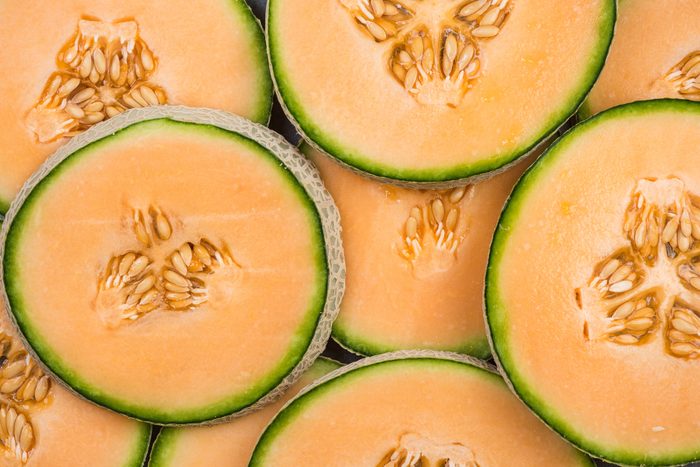
Cantaloupe
If you’ve never tried cantaloupe juice, by all means, give it a try. Not only is the melon 90% water, but its flavor is rich and the fruit itself provides a surprising number of health benefits. They are rich in vitamins A and C, which are beneficial to your skin and hair.
Cantaloupe’s water content: 90%
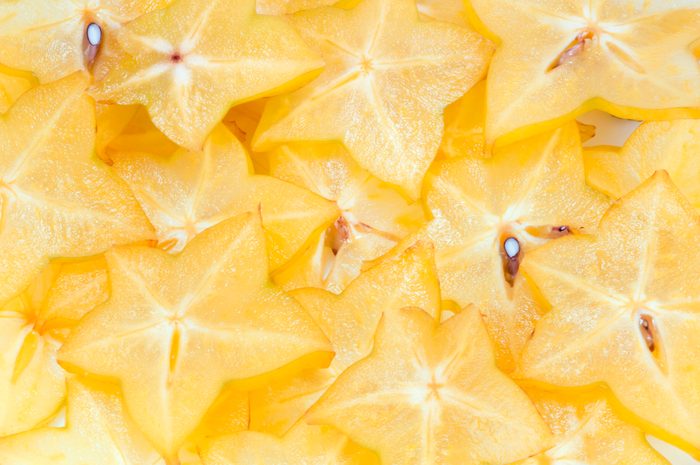
Star fruit
Most of us probably don’t have star fruit sitting in a basket on our kitchen counter, but maybe we should. Also known as carambola, star fruit is grown in tropical regions and consumed throughout Southeast Asia and the Caribbean. “It is 91% water, with 1 cup cubed providing 41 calories and 4 oz of water,” says Kerkenbush. “It’s a rich source of fiber and vitamin C.” She recommends adding it to salads as well as seafood dishes (perhaps including star fruit in a relish or marinade to compliment the fish). The entire fruit is edible, so it’s also easy to eat sliced.
Star fruit’s water content: 91%
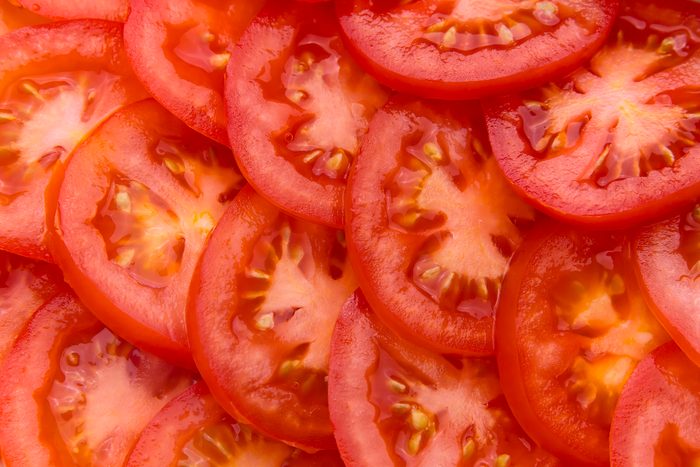
Tomatoes
There’s truly nothing like a ripe, juicy tomato. And here’s a fun fact: Two whole medium tomatoes (45 calories) are equal to one cup of water. That’s good to know considering some of us can eat a tomato like we can an apple. You can drink tomato juice, but Scott-MacLean wants to remind people that the majority of your fluid intake really should come from water itself. “The reason for this is that while you can get fluid the body needs from food we do need to hydrate with water as well,” she says. “You should have 80% of your fluid from water or liquid sources. You can also drink unsweetened teas like black, green, white, and herbal as well as sparkling waters and seltzer that count as water.”
Tomatoes’ water content: 95%
Next, read the other ways to stay hydrated.

